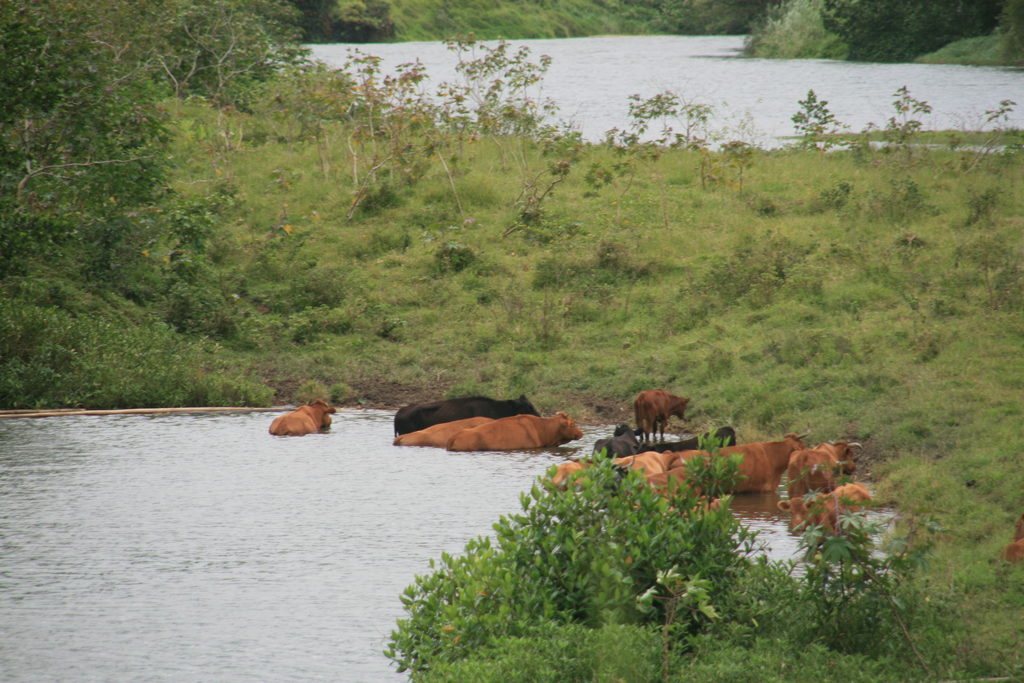Today is International “One Health” Day! Observed on November 3, One Health Day emphasises the importance of a One Health approach to address interconnected health threats spanning humans, animals, and the environment. This integrative framework acknowledges that our health is linked to the health of animals and ecosystems. By fostering collaboration across public health, veterinary science, environmental science, and policymaking. One Health aims to enhance outcomes for all by addressing health risks in shared environments.
There are four essential principles guiding the implementation of One Health which are communication, coordination, collaboration and capacity building among partners working in areas such as animal health, human health and environmental science and conservation. These sectors working together with the above principles, enable the biggest impact for improving health for people, animals, plants and our shared environment.
How One Health works may not always be crystal clear but there are many examples, especially in developed countries of how it addresses cross-cutting issues across the human-animal-environment interface. Obvious examples exist with both infectious diseases and lifestyle-associated health conditions.
Healthy ecosystems support healthy crops, providing healthy food. Healthy ecosystems are also essential to safe drinking water, which is the most vital condition to human and animal health. Healthy coastal areas and oceans are also key to providing our communities with food.
When ecosystems are degraded, however, disruptions can lead to risky interactions between wildlife, farm animals, and humans. This was evident in the COVID-19 pandemic, where the virus likely jumped from bats to humans, potentially through interactions in wet markets. Similarly, influenza strains are often shared between animals and humans.
The Pacific Islands experienced the COVID-19 pandemic’s impacts firsthand. Initial lockdowns protected these island nations from the most lethal variants, yet the economic toll of such measures was severe. From March 2020 to October 2023, the Pacific recorded over 511,700 COVID-19 cases and 3,395 deaths. The mass vaccination campaigns required substantial coordination and resources, highlighting the need for a One Health approach to anticipate and manage health crises.
COVID-19 underscored the importance of this integrative framework by revealing how animal-human interactions can lead to outbreaks. Understanding the origins of the virus, which involved animal-to-human transmission with bats as a primary reservoir, demonstrated the value of collaborative insights across public health, veterinary, and environmental science. A One Health perspective provides a more comprehensive understanding of how zoonotic diseases like COVID-19 emerge and emphasises preventive measures in ecosystems to avoid future pandemics.
The COVID-19 pandemic acts as a catalyst when it comes to addressing multi-species biological events that affect humans. Countries that employed a One Health approach in their pandemic preparedness and response, fared better in terms of impact and resilience, enabling a more coordinated response to public health crises. More importantly, countries that share data and resources across public health, veterinary and environmental agencies are better positioned to respond to challenges like that posed by COVID-19.
A leading strategy for addressing future pandemics is having early warning systems and early detection systems in place that are integrated across sectors. For example, integrated surveillance systems that monitor human health, animal health together with environmental indicators can detect outbreaks earlier and enable the implementation of preventative measures more effectively.
Leptospirosis, another pressing example, is a bacterial disease prevalent in the Pacific Islands, imposing significant health and economic burdens. Caused by the Leptospira bacteria, this disease is transmitted through mammalian reservoirs like rats, mice, pigs, and cattle, which may appear healthy but shed the bacteria in their environment. The bacteria can survive in water and soil for weeks and often spread to humans through contaminated surface waters, particularly after heavy rain, when runoff increases exposure. A One Health approach can help identify key animal reservoirs, understand contamination pathways, and guide preventive strategies to reduce leptospirosis impact on vulnerable communities.
The COVID-19 pandemic and recurring leptospirosis outbreaks demonstrate the urgency of a One Health approach in the Pacific. This perspective shifts from a siloed approach to one that integrates data-sharing, interdisciplinary research, and collaborative problem-solving. It encourages governments, civil society, and international organisations to develop policies that support cross-sectoral actions to address risks affecting humans, animals, and the environment.
International One Health Day on November 3rd is a reminder that human and animal health and the state of their shared environment are tightly connected. It calls for us all to contribute to healthier ecosystems, benefiting our families and communities.
- Dr Eric Rafai One Health Coordinator and Dr Cyrille Goarant, epidemiologist, are experts at the Pacific Community (SPC). For questions and insights into One Health, contact: pacificcommunityonehealth@gmail.com

Chicken on a farm. Picture: SUPPLIED

Lepto-friendly cattle farm. Picture: SUPPLIED



